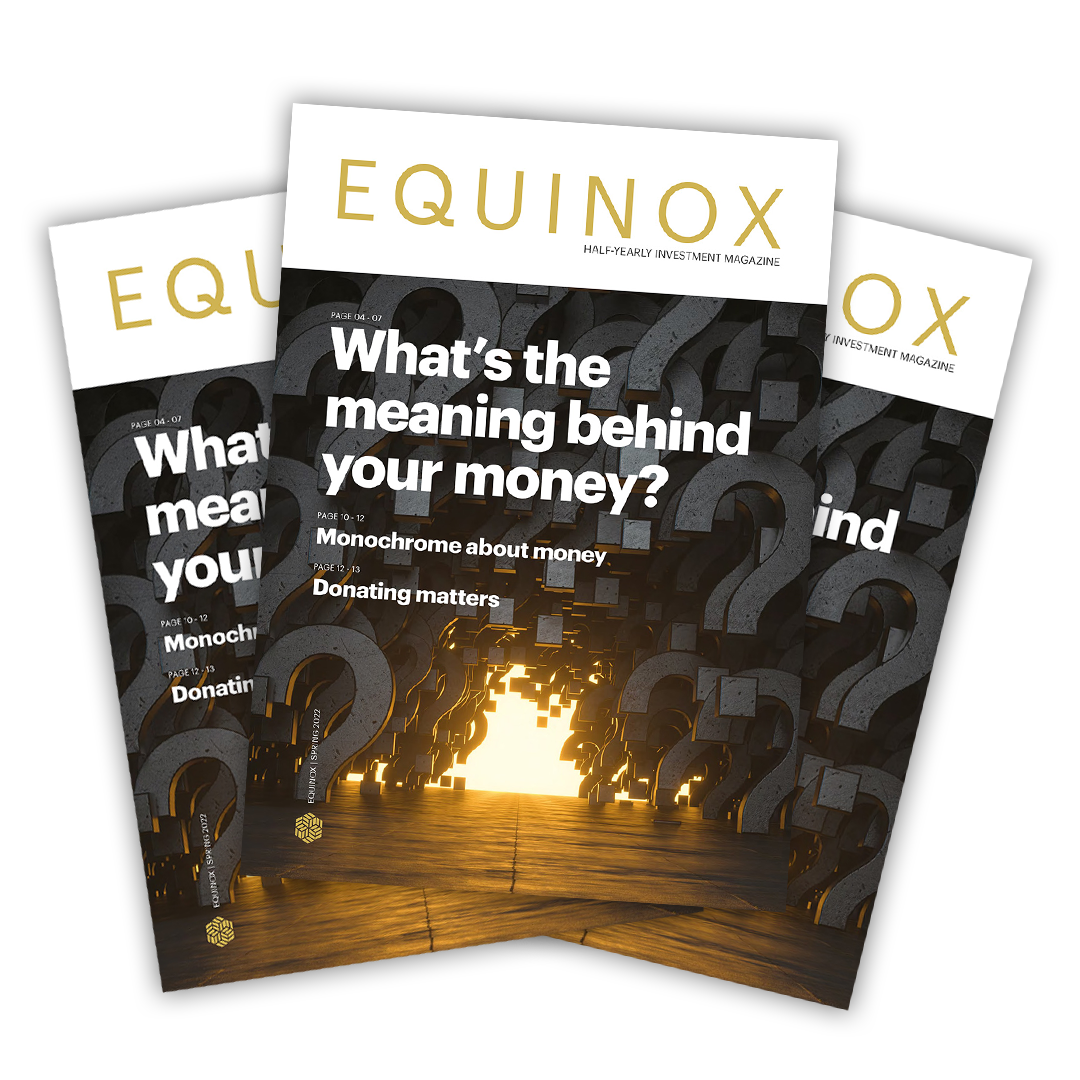This article is taken from our autumn 2019 edition of Equinox. You can view the full version here.
They call it the ‘Attenborough’ effect. Scenes of turtles entangled in plastic netting and albatrosses swallowing plastic bags shocked viewers of the 2017 BBC series, Blue Planet II. The programme opened the eyes of many to the environmental threat that plastic poses, highlighting dangers such as micro-plastic particles which can be ingested by fish and therefore make their way back into the human food chain.
The series made such an impact that it was debated in Parliament and companies were lining up to commit to reducing their plastic use. Theresa May even gave Chinese President Xi Jinping the DVD box set on her trip to China.
The Attenborough effect is clear to see; 53% of individuals in the UK and US had reduced their single use plastic over the previous 12 months to April 2019. Meanwhile, paper straws have replaced plastic ones in most bars and cafes, and promotions by major chains such as Starbucks and Costa Coffee encourage us to buy reusable coffee cups.
We’ve also seen the controversial Extinction Rebellion movement hit the headlines with their ‘occupation’ of areas of London. Regardless of whether you agree with their actions, we undoubtedly saw an increase in media coverage of climate-related issues.
If environmental concerns have recently become much more mainstream, the same is true about what we now call environmental, social and governance (ESG) investing.
Ethical?
What is sometimes called socially responsible investing (or SRI) has been around for many years under various names and acronyms.
It used to be known as ‘ethical investing’. Ethical investing is extremely hard to do properly, not least because what is ethical to one person is anathema to another.
Many traditionally ethical investment funds were targeted at religious investors and avoided sectors such as gambling and alcohol. Other funds may be targeted at investors who have no problem with such sectors but do want to avoid weapons, for example. It can become an extremely difficult area to navigate. The UK government arguably benefits from weapons sales to the Middle East – is a UK gilt therefore an ethical investment?
There is also a difference between what we call positive and negative screening. Negative screening filters out investments that don’t meet our specific ethical criteria. For example, negative screening may identify Royal Dutch Shell as an unsuitable investment due to it being an oil and gas producer which has a large carbon footprint.
Positive screening, on the other hand, aims to look for the best companies in a sector or those trying to make a positive difference. Such funds might not hold BP but often do hold Shell. Shell relies more on gas than oil (which produces less CO2) and has also been investing in renewable technology.
You can see how the definition of ‘ethical’ can very quickly become rather unclear. A truly ethical investment service requires a tremendous amount of resources, as it needs to be completely bespoke in order to cater for an individual’s own ethics, right down to individual stock level. Ethical investors should also consider whether their advisers’ values match their own. For example, even if we were to avoid investing in beverage producers, we can’t promise that Equilibrium staff won’t spend some of their wages on alcohol!
In our view this can become something of a minefield and as a result, whilst we have tried to accommodate clients where possible, we’ve never offered a comprehensive ethical service.
Risk and return
Traditional ethical investing has often led to lower returns compared to investing in mainstream funds. Screening out whole sectors can lead to missing opportunities for growth.
We can also end up with portfolios concentrated in just a few areas, which tends to mean higher risk as well as lower return potential – not an attractive combination!
Old school ethical funds are very much a blunt instrument. Whilst a green investment fund may well avoid oil and gas, it ignores the fact that every single company produces some sort of emissions. Everyone has a carbon footprint, so we cannot completely avoid all CO2 producers or there’d be nowhere left to invest!
That’s where modern ESG investing is different. Rather than viewing everything as black or white, it acknowledges that there are shades of grey in between (or should that be shades of green!?).
Companies are given scores on various metrics covering not just environmental impact, but social factors such as how well workers are treated. Governance factors are also important, such as whether a company has non-executive board members who provide independent oversight of a company’s conduct.
The icing on the cake is that, rather than detract from returns, it can actually be argued that companies with good scores in these areas are often better run companies, who will therefore be more successful in the long run.
Many of the mainstream fund managers we invest with already embed ESG scoring into their process. This is not particularly because of ethical concerns as such; they instead see it as sensible from a risk management and portfolio construction point of view.
A focus on ESG has proven extremely important in the past when investing in emerging market companies, which have often had poor governance and a
poor track record on workers’ rights. By considering ESG factors, emerging market fund managers can hopefully avoid the blow-ups that hit companies in these markets from time to time. Sometimes just avoiding the worst investments can lead to better returns than the market overall.
There is increasing evidence that companies with good ESG ratings can actually make better investments than those with poor track records.
Equilibrium’s approach
We have recently begun screening our portfolios for ESG factors, obtaining the full holdings of every fund that we invest with and pumping this data (which equates to well over 4,000 individual stocks), into the Eikon system provided by Refinitiv (formerly Thomson Reuters).
We use this to assess our portfolio’s exposure to different investment factors, sectors and trends. The system’s scenario testing tells us how the portfolio would perform in various situations. For example, how much would the portfolios fall if there was a re-run of the financial crisis? It also provides attribution analysis so we can see how much risk and return each individual investment has contributed to the portfolio as a whole.
The same system will also score each company for ESG factors. Each company is given is a rating from 0 to 100, which is then converted to a grade from D- to A+. Based on our analysis, the equity content of a typical balanced portfolio has an overall ESG score of 65 at present, which equates to a B grade.
Purely focusing on emissions, the portfolio scores a little better at 72 which is a B+. To achieve an A grade, the score must be anything above 75, and so it is not far away from meeting this threshold.
We are only able to screen equities to this level of detail at present but are in the process of building up the same capabilities for bonds, property and all the other asset classes we invest in.
Equilibrium is beginning a project to determine which ESG factors are seen as most important to our clients in order to see how well our entire portfolios (not just the equity content) match up to those criteria.
There are several routes we may then explore. We may find that our current portfolios meet the criteria of the vast majority of clients as they are now.
Or, that they will do so with a few minor tweaks. If this is the case, we may look to set formal targets for our preferred ESG measures and try our best to meet those targets with our core portfolios, without sacrificing return potential.
Alternatively, we may find it more appropriate to set up completely new portfolios to accommodate those clients for whom ESG factors are more important.
As always, we will listen to clients and make sure what we offer matches what they actually want, continuing to evolve our service and stay ahead of any emerging investment trends.


